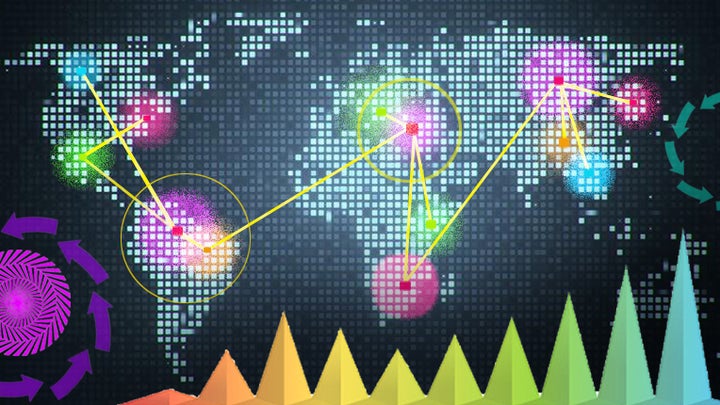
By Alessandro Vespignani, Sternberg Distinguished Professor, Northeastern University
Since the earliest times, humankind has been permanently at war with infectious disease. However, a few decades ago, the scientific community experienced the euphoria of imminent victory. The introduction of antibiotics. The culling of common diseases such as measles, mumps, rubella, and polio. The eradication of smallpox. Each new milestone led practitioners and the public at large to believe that we were on the verge of routing the enemy once and for all.
Unfortunately, our celebrations were premature. In the last two decades, we have witnessed infectious diseases making an alarming comeback. With outbreaks of coronavirus (more commonly known as SARS and MERS), a major flu pandemic, an Ebola epidemic of unprecedented proportions, and an elusive vector-borne disease such as Zika in recent years, it seems that hundreds of newly emergent or re-emergent pathogens have rallied against humankind.
With each outbreak, we learned that advances in medical treatment, improved healthcare systems and knowledge of infectious disease agents can provide us with an edge in the fight. However, we also realized that our societies are now far more interconnected and, somehow, more susceptible than in times past. Diseases can take advantage of our transportation infrastructures, hopping flights from country to country and city to city and spreading with unprecedented ease. More troubling, the mortality rates of past epidemics like the infamous influenza pandemic of 1918 would now thoroughly disrupt our social, technological, and economic systems.
Historically, our approach to combating diseases has been largely defensive. Doctors, healthcare workers and public health responders mounted their defense after recognizing the outbreak. In recent years, however, this war has been waged not only in the hospital trenches by healthcare professionals, but also on computers by teams of scientists. Advances in computing sciences and the availability of new data sources allow scientists to develop new methodologies that predict the “when” and “where” of epidemics and how they will unfold. In other words, science can now gather the “intelligence” required to anticipate the moves of infectious diseases.
While public health data collected through traditional surveillance systems are still indispensable, a new era of opportunities has been ushered in by the availability of big data streams, such as electronic health records, social media, Internet, mobile phones, and remote sensors. We can even design interactive digital platforms where anyone can contribute information on their own health status, becoming sentinels on the ground who provide earlier warnings about disease outbreaks.
Computing and data sciences are the keys to accessing and harnessing this wealth of “intel,” creating the possibility of real-time acquisition and analysis of highly resolved digital data. A recent special issue of the Journal of Infectious Diseases which focuses on big data provides a stunning range of examples. From mining Twitter posts to analyzing the flu season to using cell phone data and satellite imagery to understand the population movements driving the dissemination of epidemic diseases, a computational approach would strengthen the usual disease surveillance system and provide public health systems with new lenses on human social behavior.
Computational epidemiology also offers predictive modeling. Analogous to meteorology, large-scale data-driven models of infectious diseases provide real- or near-real-time forecasts of the size of epidemics, their risk of spreading, and the dangers associated with uncontained disease outbreaks. These models are not only valuable because they predict where and how an epidemic might spread in the next few weeks, but also because they provide rationales and quantitative analysis to support public health decisions and intervention plans. For example, the recent Zika epidemic remained under the radar of the medical and research communities until early 2016, but it likely emerged in Brazil in the last months of 2013. Computational models are being used to recreate the evolution of the disease and potentially shed light on the many puzzles concerning the impact of the epidemic in parts of Latin America.
The more reliable and precise the “intel,” the higher its value. Before we can reach the precision and usefulness of numerical weather forecasting, there are, however, several policy and scientific challenges that need to be addressed, from rigorously validating new methodologies to defining appropriate data sharing policies during health crises. As underlined in a recent report from the National Science and Technology Council of the Executive Office of the President, there is an urgent need to develop the collaborations and scientific initiatives needed to advance the field. It is not a matter of “if” but “when” we will fight the next battle against a pandemic pathogen, and this is a call to arms that should bring together not just government agencies, but the entire research and development world as well as civil society.
Follow Alex Vespignani on Twitter, @alexvespi
